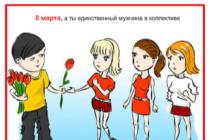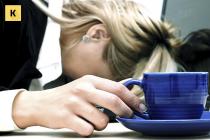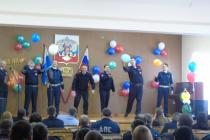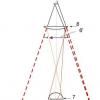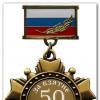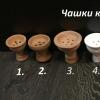Harvesting linden in the village of Bogorodskoe is a continuous process. Indeed, in order for high-quality blanks to come out of the trunk, the linden must dry for at least four years in natural conditions. That is why, after primary processing, linden trunks are put into huts or stacks and left for several years in special hangars.
The dried tree is sent to the notch. On a lathe or manually, with an ax, craftsmen outline the most general contours of a future toy, cutting or sawing out a workpiece according to a template. Then the product is processed with a chisel and a special knife, the so-called “pike”, which are made by hereditary village craftsmen especially for Bogorodsk carving.
The carved and carefully processed parts of the future movable wooden toy are polished, then the roughness is polished, making the wood absolutely smooth and velvety to the touch. The resulting parts are assembled into a moving composition, if necessary, painted by hand and several layers of varnish are applied.
The symbol of the craft is moving wooden toys.
The Bogorodsk craft of a wooden carved toy is akin to Sergiev Posad. carving school Trinity-Sergius Lavra is the ancestor for both of these crafts and known since the 15th century. In the 18th century, fishing was a seasonal peasant production. From November to early April, as a rule, there is no work in the village, so in order to somehow occupy themselves and earn some money, the peasants took up knives and carved wooden toys out of linden. Sell finished products were taken to Sergiev Posad.
By the middle of the 19th century, Bogorodsk carving became an independent handicraft, which gained Russian and then world fame.
Gradually, the Bogorodsk toy moved from the category of handicraft peasant crafts to the direction of folk art, acquired its own unique features.
In 1913, the artel "Bogorodsky carver" was organized in the village, which allowed the craftsmen to gain economic independence and bring samples of their craft to the international market. By this time, moving wooden toys had become a distinctive feature of the craft, which sharply distanced the artel from the neighboring Sergiev Posadskaya, which retained the traditional Russian nesting doll as a symbol and main operating model.
The symbol of the Bogorodsk craft, known throughout the world, has become the toy "Blacksmiths", which is a wooden figure of a man and a bear alternately beating hammers on the anvil. Blacksmiths usually do not paint carved from light linden wood, but simply cover it with several layers of colorless varnish.
The price of urbanization is the decline of folk craft.
By 1960, under the influence of the so-called fabrication of folk crafts, an artistic carving factory was created on the territory of the village of Borogodskoye. The disappearance of the artel organization of labor gradually alienated the craftsmen from each other, depriving them of the simplicity of rural communication so necessary for the development of craft. Under the yoke of the universally imposed principles of the planned economy, village traditions withered, and the development of the village territory with panel high-rise buildings, deforestation and the demolition of old carved wooden buildings gradually nullified the harvesting and drying of wood, which led to the need to purchase expensive third-party raw materials. High energy prices exacerbated the already increased production costs, the master carvers who moved to the upper floors of new buildings completely lost touch both with each other and with folk roots, and traditional sales markets became inaccessible, because the price of Bogorodsk toys has greatly increased, and the quality Unfortunately, it left much to be desired.
Bogorodsk toy from the manufacturer. High quality and reasonable price.
Located in the Sergiev Posad district, the production of the online store of souvenirs and gifts "Golden Grail" brought together masters of various areas of folk art crafts. Carefully created and carefully maintained reputation, low prices and invariably high quality of manufactured products have made our company the undisputed leader in the production and sale of Russian souvenirs.
Sergiev Posad handmade nesting dolls, Bogorodsk toys, birch bark items, painted boxes, Gzhel and Khokhloma - this is not a complete set of souvenirs that you can buy. Our experts are ready to answer any questions you may have, provide guarantees for the authenticity of our products and give advice on the use and storage of our souvenirs.
Contact us and stay our customers for many years!
The history of Bogorodsk wooden toys goes back over 350 years. Products are known all over the world, and at one time they were appreciated not only by children, but also by world-famous sculptors. A distinctive feature of the Bogorodsk toy is the absence of obvious details and strict carved forms in sculptural items. Thanks to this method of manufacture, the toy developed creativity and imagination in children, and for a long time did not bother them.
No less interesting were the moving toys. Their thoughtful design worked for a long time and did not break.
The Bogorodsk toy got its name from the village where craftsmen who made wooden blanks lived. The Bogorodsk toy has become so firmly established in the life of the local population that one of the products has become a symbol of the village and is depicted on its coat of arms. This is a movable toy with a man and a bear.
The history of the fishery

The manufacture of Bogorodsk toys began in the 15th - 16th centuries, in the village of the same name near Sergiev Posad, Moscow Region. Initially, craftsmen in the processing and artistic cutting of wood worked on orders from buyers. They prepared the base, which they painted later in Sergiev Posad.
Finally, as a craft, the manufacture of Bogorodskoye toys was formed at the end of the 18th - beginning of the 19th century, when the entire process of making toys was transferred to craftsmen from the village of Bogorodskoye. They developed them, deciding on the theme, made the bases and, if necessary, painted them.
At the beginning of the 20th century, an artel was organized in the same village, in which masters of cutting toys were trained, transferring to them the accumulated knowledge, techniques and skills. Due to the war and economic troubles, the artel was temporarily closed, and after that it started working with renewed vigor already in Soviet times.
Bogorodsk wooden toys were actively exported to European countries. At first, the themes were presented by the life of the common people, later, after the end of the Second World War, the masters went into fairy-tale themes. In later years, the appearance of plots for making toys was influenced by events taking place in the country, for example, sending a person into space, popularizing sports, etc.
Types of Bogorodsk toys
Bogorodsk wooden toys were of two types:

1. Sculpture toy

2. Movable toy
The figurines of the sculptural plan were distinguished by the absence of clearly defined features. In them, children, due to the development of their own imagination, could see a bear, a fox and other animals.
Bogorodsk craftsmen also carved toys with moving structures. The figurines were attached by craftsmen to plates that moved relative to each other, springs with buttons were also sent inside them, and another part of the toys were figures fixed on a plate with a counterweight on threads.
The most famous Bogorodsk wooden toys are:

Blacksmiths fixed on plates;

dancing man with a spring inside;

chickens, pecking grains on a circle with a counterweight.
Episodes from ordinary life were chosen as the plot for making toys, crafts and professions of that time were often covered. For example, a shoemaker was depicted at the time of making boots, a spinner was sitting with a spindle behind a spinning wheel, lumberjacks were chopping wood, hussars were riding horses, young ladies were depicted with flowers in their hands. Later stories featured bears accompanied by space satellites, vacuum cleaners, carpet cleaners, soccer players, and so on.
Manufacturing technology

Traditionally, Bogorodsk wooden toys were carved from solid linden. Among all trees, this wood is the softest and most pliable.
At first, the harvested and dried trunks were sawn into chocks, and only after that they went to work for the masters.
The artisans split the chocks on their own, with a couple of strokes into four parts. It was this form of workpiece that was most convenient for work. The figurines were cut out with the help of special Bogorodsk knives and files. Expensive types of toys were made from a single piece, and simpler toys were made from the remaining chips.
When selecting chocks, they tried to take those in which there were the least number of knots, since wood with knots is difficult to process for this type of craft. Wood carvers were usually men.
Painting Bogorodsk toys

(Colored (painted) Bogorodsk toys)
After preparing all the elements of the toy, it was assembled and sent for painting. If the composition was not a single structure, but was assembled from many figures or wood chips, the elements were fastened together with PVA glue and wooden glazing beads.
Most often there were Bogorodsk toys that were not painted at all. They allowed children to develop their imagination. If the toys were painted, the painters used bright, saturated and very juicy colors. Elements of Khokhloma and Gorodets painting were traced in the toys, but at the same time they were devoid of small details characteristic of these techniques, since the toys were designed for children.
MBDOU of the city of Astrakhan No. 52 "Rosinka"
Fedorova Olga Pavlovna teacher
Topic: Bogorodsk toy and its masters.
(senior group)
Purpose: To consolidate knowledge about the variety of folk toys; continue to acquaint with folk crafts. Give the concept of the Bogorodsk toy, its types, manufacturing technology. To awaken children to search activity, to reasoning. To form interest and desire to make a toy according to the Bogorodsk type.
Dictionary activation: Bogorodskaya, Kargopolskaya, chisel.
Material: Bogorodsk toy: dynamic - a grandmother with knitting needles, an old man in a sleigh, chickens, hares are chopping cabbage, a fox is washing, a man and a bear, a she-bear with a cub, a bear-twitch.
Toys: Filimonov cat, Dymkovo rooster, Kargopol - Polkan,a basket, an envelope with a diagram, a chest, an illustration of a Bogorodsk toy, an illustration (the sequence of making a Bogorodsk toy), tools (a hatchet, a knife, chisels), a video cassette of the Bogorodsk toy; silhouette of a man and a bear made of cardboard, 2 strips, 2 wires - for each child.
Preliminary work: acquaintance with Dymkovo, Filimonov, Kargopol toys, watching the cassette "Secrets of the Sirin Bird", an excursion to the toy museum, looking at illustrations, albums "Folk Toy".
Lesson progress:
- Guys, today we have guests at the lesson. And we always welcome guests, what words do we greet guests with?
Children: - hello, welcome, nice to see you, please come in.
- How many good and kind words you said, and in response you received many affectionate smiles and shining eyes. "The more a person does good, the more he gets it."
(the children go to the table, on which there is an envelope with the number 1, a basket with the number 2 and a chest with the number 3)
- Guys, look, what do we have here?
- That's right, this is an envelope, a chest and a basket. And look at them, the numbers. And what does that mean?
- Guys, what are we going to open first?
- Under the number 1 we have an envelope, and in it is a diagram. (children stand in a circle, but do not hold hands, the leader says a proverb to the one standing next to him (on the left) and takes his hand, the children say proverbs and hold hands, at the end a circle is obtained)
- Guys, what a great fellow you are, you know a lot of proverbs, everyone is so different, they don’t repeat. Well done!
- Guys, look what we got?
- Yes, guys, this is a circle, and the circle is a symbol of what? This symbol is the sun. The sun is life. The sun will help us today in class.
- Let's see, guys, what do we have under the number two?
-Under the number 2, we have a chest. Let's sit down on the chairs and see what we have in the chest. (children sit down)
- Guys, look what kind of toys they are, what are they called?
(vos-l opens the chest and puts toys on the table)
- That's right, this is a Dymkovo rooster, look how colorfully painted it is, and this is a Kargopol toy - Polkan, and this is a Filimonov toy - a cat.
Look, the Filimonovo toy is different in that it is elongated.
- Well done, but think about what these toys can tell us?
Children: - about the name of the area: about the master, about his character: about the material from which they are made.
- Yes, guys, each toy can tell us a lot of interesting things, give joy to both children and adults, amuse them. Folk toys have inspired many poets to compose poems. Our children have learned poems, but about those folk toys that we don't have now.
(children read poems)
Dymkovo turkey.
Here is a smart turkey, he is all right.
The big turkey has all painted sides.
He surprised everyone with his outfit, spread his wings importantly.
Look, a magnificent tail, it is not at all simple-
Like a sunny flower, but a tall scallop
Red paint grief, like a king's crown.
The turkey is colorfully beautiful, he is pompous, proud.
Looks down around an important bird - a turkey.
My toys. V. Vasilenko.
Similar to an old fairy tale, they appeared before me.
Their horns look like spruce, their color is yellow, blue.
Dark red and green. Slender goat and deer.
They are ready to amuse me, to be with me all day long.
They willingly found a corner on my table.
My work is monitored so that I can't get tired.
And they have big horns. You can't take your eyes off them.
Surprisingly alive - they will not only ask for food.
- Well done. Very good poems. But really, these folk toys are similar to a fairy tale. (vos-l takes out a sheet, opens it, shows the children an illustration of the Bogorodsk toy)
- Guys, look at this illustration of a toy unfamiliar to us, but it is called Bogorodskaya.
(teacher's story)
Near the ancient city of Sergiev Posad near Moscow, on a high mountain among forests and fields, the village of Bogorodskoye is spread. According to folk legend, a family lived in the village a long time ago. The mother decided to amuse the little children. She carved a figure from a log (show) and called it "Auka". The children were happy, played and threw the “auka” behind the stove. Once the husband began to gather for the fair and said: I'll take the “auka” to the market and show it to the traders. "Auka" bought and ordered more. Since then, the carving of the toy appeared in Bogorodskoye and it became known as the Bogorodskaya toy.
This toy is cut not from any tree, but only from linden, alder and aspen, because this wood is easily processed and allows you to reproduce small details. The wood dries out within three years so that there are no cracks. And only then do they get to work. The tools of the master are simple.
(display of tools: hatchet, knife, set of chisels)
- Guys, look, and in this illustration, the stage of making a toy.
(illustration display)
The master first takes a chock, looks at it carefully, as if he is trying to figure out something. Then he makes a notch with an ax, then processes it with a chisel, and then describes the skin with a sharp knife, opens his eyes, mouth, and, finally, the master gives a name to his toy. Fairy tales are told with toys. The Bogorodsk toy is very different in subject matter - these are figures of animals and people who are busy with everyday activities: sawing firewood, forging metal, drinking tea.
Fizkultminutka.
I ask you to get up - this is one, the head turned - this is two.
Hands down, look forward - this is three, with force to press them to your shoulders - this is five.
And now quietly sit down - it's six.
- Oh, guys, we got so carried away that we forgot about the basket. What number is written here?
- Yes, this is the number 3. Three guys are very common in a fairy tale - 3 sons, 3 girls, 3 tasks, 3 wishes, 3 bears.
- And our magic basket. A fairy tale lives in it. I know a lot of fairy tales, today I don’t want to tell you a fairy tale, but show a fairy tale about a Bogorodsk toy, and you will help me.
(the teacher takes out one of the toys from the basket and tells a fairy tale, inviting the children to make movements with toys in the course of the story).
Fairy tale.
Once upon a time there was a grandfather “Because of the forest, because of the mountains, grandfather Yegor rides on a horse himself” (toy show: grandfather rides a horse) and grandmother “Shadow-shadow-sweat in the garden, then the wattle fence in the hut the stove is heated grandmother hurry up” . Grandmother took care of the house, knitting socks. (toy display: grandmother knits socks) And grandmother had chickens. “On the street, 3 chickens are fighting with a rooster, shoo-shoo, ha ha ha, have pity on the rooster” (toy display: chickens peck grain). Grandmother loved her chickens very much, let them out for a walk, fed, looked after them. They lived, grandfather and grandmother lived, but the trouble is, they were old and it was hard for them to do everything, they had no helpers. They lived on the edge of the forest. The animals found out that grandparents needed help, they decided to help them. Grandma decided to bake pies with cabbage. Hares came running and helped to chop the cabbage. “The grass-ant rose from sleep, the titmouse bird took on the grain, the bunnies took on the cabbage” (toy display: hares cut cabbage). The fox-sister came, helped the grandmother to wash the linen. “Today, the fox-sister is washing her fur coat all day, helping her grandmother” (showing a toy: the fox is washing clothes). Then three bears came. Mikhailo Potapych, together with his grandfather, worked in the forge, knocked with hammers. "What's the noise, what's the knock? Knock-knock, knock-knock. A gray bear, an old grandfather picks up boots, starts a business ”(showing a toy grandfather with a bear knocking with hammers). And Nastasya Petrovna decided to take a steam bath for her son-bear cub. “Vodichka-vodichka wash my face so that my eyes shine, so that my cheeks turn red, so that my mouth laughs, so that my teeth bite” (toy display: a bear washes a bear cub). So, the whole day the animals were busy with business, helping their grandfather and grandmother. While the animals were doing their business, the grandmother and Nastasya Petrovna baked pies with cabbage. In the evening they all sat down at the table. “Ay, kachi-kachi-kachi, look at the bagels-kalachi, piping hot from the oven, all the blush is hot.”
That's the end of the tale, and who listened well done. These are the industrious animals that lived in this forest.
- Guys, an interesting tale? What do you think Mikhailo Potapych, is he very strong? Why do you think?
(the teacher takes out a toy from the basket - “bear-twitch" and shows how he was engaged in physical education)
-Let's show how we can do exercises.
The sun peeked into the bed
One two three four five.
We all exercise
We need to sit down and stand up
Stretch your arms out wide
One two three four five
Bend over three, four
And stand still.
On the toe, then on the heel
We all do exercises.
-Guys, let's remember which toy told and showed us a fairy tale?
- Yes, this toy is called Bogorodskaya. What do you think these toys have in common and how are they similar? - How do they differ?
- Most of the Bogorodsk toys have one attractive feature - these are toys “with movement”. A witty device sets the toy in motion, enlivens it, makes it more entertaining.
- Do you remember what these toys are called?
- Look. These things are now visiting us.
To tell us the secrets of ancient, wonderful beauty.
To lead us into the world of Russia, into the world of goodness.
To say that there are miracle people in Russia masters.
- Russian craftsmen knew how to work and they put all their skills, all their soul into their work, so the products turned out so beautiful. About hard work, the people put together proverbs and sayings.
- What proverbs and sayings about labor do you know?
(children say proverbs and sayings about work)
- And now, guys, we'll see how real masters work.
(children watch a cassette on which the work of the masters is recorded)
- Did you like the work of the masters?
- Do you remember what kind of toy the masters made? And if you want to turn into masters yourself and make your own toy, let's go and sit at the tables.
(children sit at tables on which silhouettes of a bear and a man cut out of cardboard lie, the teacher explains and shows how to make a toy by attaching silhouettes to the bar with wire).
- Well done. You have become good craftsmen. (children show how their toys move)
But now, our work has come to an end. What new toy did we not only meet today, but also made it ourselves.
- What did you like the most?
- Guys, tonight, when you come home, tell your mom and dad what we did and show us your toys.
other toy presentations
"Dymkovo toy for children" - Why was the pottery settlement called Dymkovskaya. What ornaments decorate toys. Kargopol toys. Dymkovo toys. The form of the Abashev figurine. Masters of Kargopol. Ornaments. Abashevsky masters. Types of toys. Figure sizes. Kargopol toy. Painting with bright oil paints. Dymkovo. Filimonov toy.
"Russian folk doll" - Why is a baby or a doll called Lyalka. Martini dolls. Action plan. Kumoha with sisters. Matryoshka. Birch doll. The baby was tightly swaddled. Puppets. What do we want to know. Grandma's doll. There are different dolls in the world. Russian folk doll. pagan times. Game dolls. Puppet-column.
"Russian folk toy" - Educational value of toys. Introducing preschool children to Russian folk culture. "Journey with Matryoshka". Drawing "Toys from Polkhov-Maidan". Painting "Dymkovo duck". Drawing "Family of Semyonov matryoshkas". Formation of social qualities of the personality. Folk toys have always been associated with family traditions.
“Bogorodskaya Toy” - In the 15th century, pilgrims brought horses and girls in kokoshniks from the Lavra. Which of the peasants carved the first wooden toy. Tradition. Bogorodsky toys. In the 19th century, nesting dolls began to be made in the capital's workshop. A firm place in the plots of Sergiev handicraftsmen was occupied by everyday topics. Bogorodsk peasants.
"Filimonovskaya folk toy" - Filimonovskaya toy - Russian art craft, formed in the Odoevsky district of the Tula region. Filimonov toy. The oldest folk art craft in Russia. It got its name from the village of Filimonovo, where the last craftswomen lived in the 1960s, reviving the forgotten craft.
“Painting of a Dymkovo toy” - On the banks of the Vyatka River there is a village - Dymkovskaya Sloboda. Fir-trees sleep at the highway in hoarfrost. Making a Dymkovo toy today. The patterns are very simple. There is freedom on Vyatka. Artistic word. Dymkovo toys. Dymkovo turkey is good. Story. The Dymkovo young lady walks slowly. Decorate the horse. Whitening with chalk soil.
On a picturesque hill on the banks of the Kunya River, the left tributary of Dubna, stands the village of Bogorodskoye - the birthplace of a wonderful folk craft of carved wooden toys and sculptures. Bogorodskoye is an old village.
In the middle of the 15th century, the village belonged to the Moscow boyar M. B. Pleshcheev. He bequeathed it to his eldest son Andrei. In 1491, Andrei, in turn, bequeathed to his son Fyodor. Subsequently, in 1595, the village of Bogorodskoye passed into the Trinity - Sergius Monastery. In the village stood a wooden Church of the Assumption.

Already in the 15th-16th centuries, Bogorodsk peasants, at that time monastic serfs, laid the foundations for the artistic craft of woodworking that developed later. The village has become one of the centers of folk art in the history of Russian applied art. 
In Sergiev Posad, there is a legend about how in the middle of the 18th century, a resident of the town carved a doll of 9 inches (40 cm) in size from a lime churak and sold it to the merchant Erofeev, who traded at the Lavra. 


He put it as a decoration in the shop. The toy was immediately bought at a great profit for the merchant. After that, Erofeev ordered a whole batch of such toys. 


Folk craftsmen, working with a primitive tool, managed to create truthful, realistic images of the surrounding reality from wood. They carved figurines of animals and people from linden, from folk life, fables and fairy tales. 

Particularly interesting are toys with movement: on slats, with balance, with a button. These uncomplicated, but always witty devices make the toy lively, expressive and especially attractive. 
The toy "Blacksmiths" is over 300 years old. "Blacksmiths" has become a symbol of the Bogorodsk industry. It is worth moving the slats and the brisk work immediately begins. Figures move in a clear rhythm, hammers beat on the anvil in time. 
In 1923, the masters united in the artel "Bogorodsky carver" and a vocational school was opened, which trains new cadres of masters of artistic woodcarving. 
In 1960, on the eve of the 300th anniversary of the birth of folk craft, the artel was transformed into an artistic carving factory. 
Bogorodsk toys can be found in shops, museums, exhibitions, in many houses not only in our cities, but also abroad. 
Far beyond the boundaries of the Moscow region, Orthodox masters are known - miracle workers N. I. Maksimov, V. V. Yurov, S. Badaev, M. A. Pronin, A. Ya. Chushkin, A. A. Ryzhov, I. K. Stulov and other.
Bogorodsk master artists - participants in numerous exhibitions; their works were awarded gold medals at world exhibitions in Paris, New York, Brussels.
The "Peasant and the Hen" toy is in the Historical Museum of Moscow, the composition "How the Mice Buried the Cat" is in the Museum of Folk Art, the toy "The Cavalier and the Lady", "Tsar Dodon and the Little Star" is in the Russian Regional Museum of Local Lore. There are toys in the Sergiev Posad Museum-Reserve.
Works of the artist Pautov





